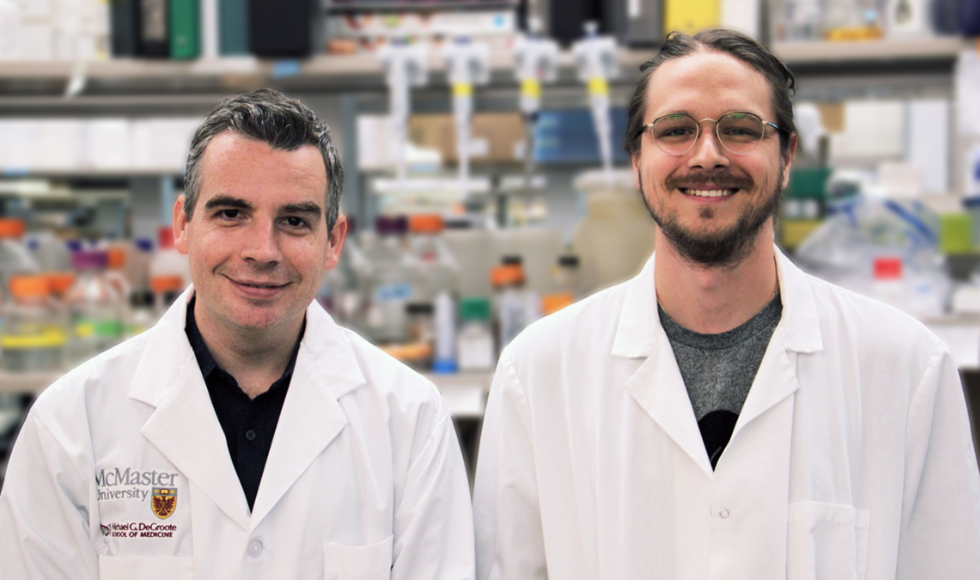Researchers pinpoint genes and mutations that let viruses kill drug-resistant bacteria

John Whitney, left, and Nathan Bullen, together with researchers from the University of Colorado, have identified key genes in the evolutionary arms race between bacteria and the viruses that kill them, which could potentially be harnessed to treat antibiotic resistance.
BY Blake Dillon
September 19, 2024
New research out of McMaster University and the University of Colorado identifies key genes and mutations that allow bacteria and the viruses that prey on them to adapt in an evolutionary arms race, a promising discovery in the search for solutions to antibiotic resistance.
Viruses called bacteriophages — or “phages” — prey on bacteria, infecting and killing them. Over billions of years, bacteria have evolved to resist phage infections, and phages have evolved to overcome this resistance.
Phages are an ideal therapeutic option for people experiencing antibiotic-resistant infections, but the molecular mechanisms underlying phage resistance and resilience had remained poorly understood.
Now, researchers have pinpointed the exact genes and mutations involved in bacterial resistance to phage infection and counter-resistance in phages.
In the study, published in the journal Nature Communications, researchers focused on the antibiotic-resistant bacterium Enterococcus faecalis (VRE) and a phage that infects it, called phi47.
They examined two very closely related strains of VRE that interacted very differently with phi47 viruses, says study co-lead John Whitney, an associate professor in the department of Biochemistry and Biomedical Sciences.
One strain entirely resisted the phage, while the other was infected and killed, allowing the researchers to identify the specific gene that enabled phage resistance.
“We discovered that the phage was able to bind to both strains of the bacteria, but was only able to infect one,” says lead author Nathan Bullen, who led the McMaster research while doing his PhD in Whitney’s lab.
“This led us to believe that the resistant strain had an anti-phage defence mechanism encoded in its DNA.”
Using a technique called CRISPR interference, researchers “selectively inactivated genes” until the culprit was found, says Bullen, who is beginning a postdoctoral fellowship at the University of Colorado.
They discovered the phage-resistant strain of VRE had a gene that allowed it to “chew up” foreign DNA, preventing infection.
The research team also explored how phages might naturally evolve to overcome this resistance — without the help of scientists.
Using whole genome sequencing, they found the phages could acquire a mutation that let them deactivate VRE’s anti-phage defences, so they could infect the resistant pathogen once more.
“Just a single change in the genetic code of the phage enabled it to overcome phage resistance, allowing it to completely eradicate VRE once again,” Whitney says.
Better understanding of this evolutionary arms race is critical in advancing the therapeutic potential of phages, especially as antibiotic resistance continues to rise around the world, the researchers say.
“Antibiotics are static molecules — they can’t naturally evolve to overcome drug-resistant bacteria, like phages can,” Whitney explains.
“Phages are biological entities with their own genomes. They are continuously changing and evolving to survive, which makes them especially attractive as potential therapeutics to fight antibiotic-resistant infections.”


